| |
Last Modified: 04/13/16
First Published: 03/01/08
Views: 3426 | | |
| Views: 3426 |
|
| | Certain products are more sensitive to price differences than other. Sometimes it’s worth it to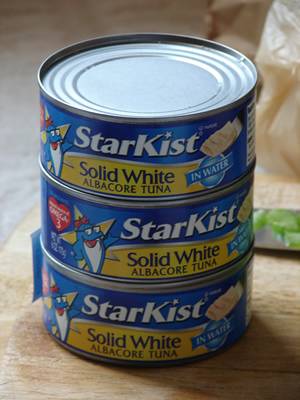 spend a little extra on something where the difference is clear, however at other times you can just as well save some money by buying a generic brand or substitute it with something else. So which products are worth splurging on and which ones could you save on? spend a little extra on something where the difference is clear, however at other times you can just as well save some money by buying a generic brand or substitute it with something else. So which products are worth splurging on and which ones could you save on? Splurge on:
- Olive oil - For bread dipping and toppings, a good quality olive oil does make a big difference. However, buy a cheaper brand to use when cooking, and save the good stuff for dishes when the flavor of the oil comes through especially well.
- Balsamic vinegar - A good balsamic vinegar doesn’t have to be outrageously expensive but can add a lot of flavor to a dish. The cheapest versions do taste inferior compared to a medium – to higher priced bottle.
- Canned tuna - Canned tuna is one of those items where a good quality brand can make a big difference in certain dishes. However, if you’re mostly making tuna salad with lots of mayonnaise, you might as well as go for a lesser brand. If on the other hand, you’re making oil-based tuna salads, or spaghetti dishes, then purchase the slightly more expensive brand.
- Ice cream - The flavors and textures between different ice cream brands can vary a lot, as can the prices. If you are making milkshakes, then the cheapest possible brands will do just fine. If however, you’re looking for good quality ice cream to enjoy as is, then a higher end brand does make a difference.
- Good “Dark” Liquor - When buying whiskey, brandy, bourbon etc… the higher priced bottles are of considerably better quality. If you are drinking this straight, then the quality will make all the difference in the world. And even if you’re making mixed drinks, the flavor of a bad bourbon will come through much more prominently than the flavor of a bad vodka.
Save on: - Canned vegetables - No-brand, generic names often taste just as good and sometimes the price difference can be quite high.
- “White” Liquors when making drinks - When you’re looking to buy vodka, gin or rum for the purpose of making mixed drinks, you won’t notice the difference if you buy generic brands. Especially when you are going to mix your liquor with something strongly flavored like Blue Curacao, Coffee Liqueur or Creme De Menthe.
- Cured meats - When a recipe calls for pancetta or even prusciutto, you can often get away with using bacon instead. Even though the flavor is not exactly the same, bacon provides a similar rich taste.
- Small packaged dry goods - Flours and different dry goods are usually not of a better quality if it comes nicely packaged. Find the bulk section in your grocery store and go for the cheaper alternatives. We have found that our local grocer uses better quality in their bulk section than they carry on the isle.
- High-end cheese for the purpose of cooking - When you’re making casseroles, lasagnas and other pasta dishes, you can often go for the lesser quality cheeses because there will be so many different flavors competing for attention. It is often unnecessary to utilize the higher priced fontina, gruyere, emmentaler or Parmigiano Reggiano when cooking.
- Vanilla Extract - Often chefs recommends using the highest priced vanilla extract that you can find. The truth is though, that when you're baking and adding vanilla extract to a variety of other ingredients you won’t be able to tell the difference. So unless you’re making a crème brule, or a vanilla ice cream where the flavor will be especially prominent, don’t buy the expensive brand.
| |
| |
Last Modified: 06/10/15
First Published: 03/06/08
Views: 29119 | | |
| Views: 29119 |
|
| | How much does a simple sandwich cost to make at home? Sandwiches are some of the most common meals - they can be enjoyed for breakfast, lunch and even dinner. So how much does one sandwich actually cost? As shown below, the classic peanut butter and jelly sandwich is clearly the cheapest, and the basic grilled cheese sandwich comes in a close second... 
Peanut Butter and Jelly Sandwich - $0.29 per serving, 370 calories The classic peanut butter and jelly sandwich takes first place on the cost scale. It is cheap, tasty, stays well at room temperature and provides protein - no wonder it's such a staple in the lunch box.
Grilled Cheese Sandwich - $0.43 per serving, 334 calories The basic grilled cheese sandwich simply consists of white bread, cheese and butter. For a fancier sandwich, add sliced ham, bacon or tomato slices. Egg Salad Sandwich - $0.51 per serving, 460 calories When eggs are the main ingredient, the price is usually low. This sandwich has a slightly higher calorie content then the other contestants, due to the addition of mayonnaise. Bagel with Cream Cheese - $0.89 per serving, 360 calories Can it get more simple than this? The toasted bagel with cream cheese is such a common meal, especially among college students. For a more interesting twist, add some smoked salmon or sliced deli meats... Tuna Salad Sandwich - $1.24 per serving, 431 calories Tuna is inherently expensive and this sandwich tops the price chart. However tuna, with all its good fats make an excellent sandwich which makes up for the high price...
Classic BLT Sandwich - $1.29 per serving, 339 calories The classic BLT consists of bacon, lettuce and tomato on white bread with mayonnaise. Contrary to common belief, bacon isn't very high in calories once it's cooked since so much of the fat renders in the cooking process. Salami & Havarti Cheese Sandwich - $0.98 per serving, 501 calories The cheese and coldcut sandwich is a common sight. Here salami and havarti is served on hearty bread with mayonnaise, mustard, lettuce and tomato. Vegetarian Hummus, Avocado and Tomato Sandwich - $0.75 per serving, 376 calories This sandwich might not be very common, however it's very tasty. Homemade hummus is very cheap - however if you use store-bought hummus, this sandwich will be considerably more expensive.
| |
| |
Last Modified: 09/18/13
First Published: 12/07/07
Views: 6071 | | |
| Views: 6071 |
|
| | Theculinaryreview.com presents a culinary quiz available for anyone to take. Is your cooking knowledge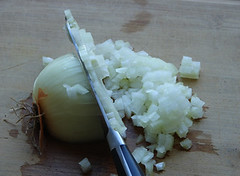 equivalent to that of a Prep Cook, a Line Cook, a Sous Chef or a Head Chef? Take the test and find out! equivalent to that of a Prep Cook, a Line Cook, a Sous Chef or a Head Chef? Take the test and find out!
The quiz will bring up questions related to cooking terms, recipes, ingredients, methods and products. For example, do you know what a Jicama is? What does the term Beurre Manie refer to? How many calories does an egg contain? What does xxx sugar mean?
The test is composed of a series of questions that have different difficulty levels. You are assigned a score as soon as you start taking the test. The more questions you answer, the more accurate your score will become.
So, how well informed are you when it comes to cooking? Will you rank at top of you class or will you barely pass your exam? Check out theculinaryreview.com to find out...
| |
| |
Last Modified: 06/17/12
First Published: 02/28/08
Views: 8096 | | |
| Views: 8096 |
|
| | In these days of rising food prices it’s even more important than ever to cook at home. We have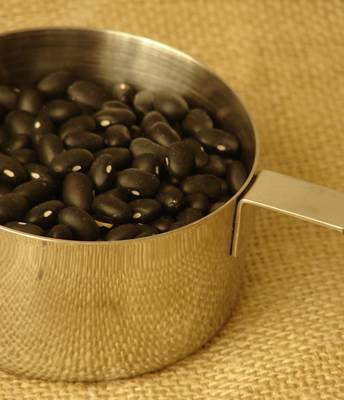 assembled a list of tips and strategies for the home chef to assemble low-cost, healthy meals for their families. assembled a list of tips and strategies for the home chef to assemble low-cost, healthy meals for their families. 1. Buy Bulk - Beans, lentils, rice, grains, flour, sugar etc… It is surprising how many different dry goods can be found in the bins at a well-stocked grocery store. Often the food in bulk does actually get replaced faster than food on the shelf and you can buy exactly as much as you need. So make it a habit to buy food in bulk, it’s usually remarkably cheaper and you have more control over how much you buy.
2. Don’t buy pre-cut meat. If you are looking to make a stew or a even a roast, you can save significant amounts of money by buying a large cut of meat and then cutting and cleaning the piece yourself. By buying a larger piece, you can cut exactly the size piece you need and you can freeze the rest.
3. Buy frozen vegetables. Some fresh vegetables are always relatively low in cost such as carrots, potatoes, celery etc. But vegetables that are affected by the season tend to be very expensive during most of the year such as asparagus, broccoli and peas. Look for those items at the frozen isle instead, where they are usually considerably cheaper. Frozen foods are most of the time more nutritious anyway since they are frozen at the peak of their ripeness.
4. Individually freeze certain meats. Some kinds of meats such as bacon and sausage are terrific flavor agents and can lift a dish immensely, even in small amounts. However, you often don’t need to use a whole pack at once. Instead, buy a large pack, then individually freeze packs of 3-4 slices of bacon or sausage links in aluminum foil and then in plastic bags. That way, you always have some on hand, and a large pack goes a long way.
5. Don’t buy canned broth. Canned broth is a big money-grabbing ingredient that you often need quite a bit of if you are making soups or stews. Instead, look for bullion cubes which you dilute in water. These little cubes give you a lot more for your money, and you can always adjust the salt content of your dish if you are concerned about sodium.
6. Buy vegetables that are in season. Don’t be stubborn and buy ingredients for a summer salad in the winter. Embrace the reasonably priced vegetables that the season brings. For example, winter cabbage makes an excellent salad and green kale provide a hearty alternative in light soups.
7. Cook double batches of food occasionally so you can freeze portions to have on hand. Then when you come home and want food with no effort, it’s easy to heat up some lasagna from last week or butternut squash soup from the week before.
8. Label all your frozen foods with the content and the date. It’s too bad when you have a well-stocked freezer and end up throwing a lot away because you don’t know how long it’s been there. Make it a habit to always mark each meal or ingredient thats in your freezer.
9. Seek out oriental markets and stores for those hard-to-find ingredients. Often, exotic foods can be found for considerably lower prices in these specialty stores as opposed to your regular grocery store.
10. Eat a diet rich in legumes, whole grains and root fruits. The cheapest foods are often the best for us. By eating home cooked meals with lots of beans, peas and lentils as well as a variety of whole grains such as brown rice, pearl barley and wheat berries you ensure a nutritious balance and a budget-friendly price.
| |
| |
Last Modified: 06/17/12
First Published: 02/29/08
Views: 4215 | | |
| Views: 4215 |
| |
Last Modified: 02/06/12
First Published: 02/04/08
Views: 7207 | | |
| Views: 7207 |
|
| | We all love classic dishes such as meatloaf, macaroni and cheese, hearty soups and cream pies. However, sometimes it can be difficult to decipher how many calories these dishes contain as well as their total cost. Here we take a look at common and loved classic dishes and brake down how much they generally cost to make as well as their calorie content. 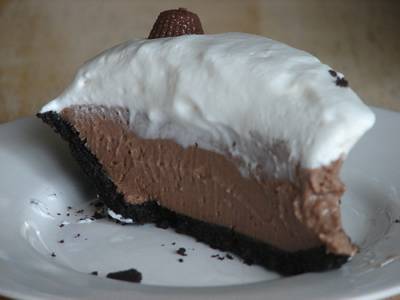
| |
| |
Last Modified: 01/28/12
First Published: 03/24/08
Views: 103493 | | |
| Views: 103493 |
|
| | The purpose of this menu The goal of this menu is to prove that you can live very well and healthy on a $50 a week budget for two people. Sure, $25 per person (or $100 for 4 people), isn't as cheap as you could possibly go, many people survive on much less than that. But with this menu we are not trying to eat rice and beans every day (even if that is served a couple of times) - we are trying to enjoy a varied diet with legumes, vegetables as well as meat and fish. And yes, it can be done, the key here is planning your meals in advance and actually cooking/preparing all your meals in the kitchen, no take-out or restaurant visits. for two people. Sure, $25 per person (or $100 for 4 people), isn't as cheap as you could possibly go, many people survive on much less than that. But with this menu we are not trying to eat rice and beans every day (even if that is served a couple of times) - we are trying to enjoy a varied diet with legumes, vegetables as well as meat and fish. And yes, it can be done, the key here is planning your meals in advance and actually cooking/preparing all your meals in the kitchen, no take-out or restaurant visits. Meals Breakdown For breakfast in this menu we feature filling meals that keep you full for a long period of time. We alternate between oatmeal with milk, and eggs and toast for breakfast, with the Saturday pancake exception. If you don't like regular oatmeal, you could easily substitute old fashioned oats for steel cut oats. They take a little longer to cook, but if you have the time (most of us don't), then they provide an even tastier and healthier alternative. For lunch, we try to prepare food that is easy to bring along whether to work or school. Sandwiches play an important part here, as do beans and rice. Another important aspect of lunch is ease of preparation. You don't really want to be cooking when lunch comes around, that's impractical for most of us. For dinner, we try to provide a varied diet that includes budget alternatives such as lentils and polenta and garbanzo bean soup. But when you're eating on $50 a week, you can actually afford meats as well as the occasional fish. For meats, we use chicken thighs which provide excellent flavor for a good price, as well as sausage and bacon. On Friday, we feast on salmon. We have not accounted for drinks in this menu, other than a glass of orange juice each morning for breakfast. We have attempted to make a practical menu. For example, we allocate a pack of bacon over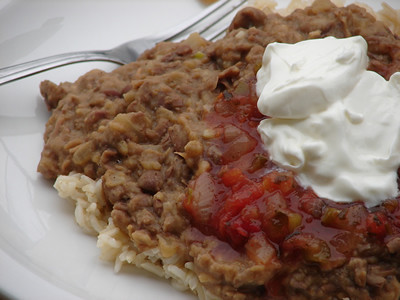 two days: pasta carbonara one day, and BLT sandwiches for lunch the next. We make a double batch of soup, so that the other half can be enjoyed for lunch the next day. two days: pasta carbonara one day, and BLT sandwiches for lunch the next. We make a double batch of soup, so that the other half can be enjoyed for lunch the next day. Cost Calculation All of these meals are priced with the accrual method. That means, that we only calculate the cost of as much as you need. In other words, if a recipe calls for 1/2 pound of bacon - we only calculate the cost of 1/2 a pound, even though you might need to buy a one pound package. That means, that it might cost more than $50 to purchase the ingredients for these recipes, however if you already have staples, it might cost less. Overall, the difference in price averages out over time: the price calculated for these dishes is exact. Many of the recipes listed, calls for making more than 2 servings. Either scale down the recipe to fit your needs, or make a larger batch and freeze for another day. If you have leftover sausage for example or if you need to buy a larger pack of salmon - then freeze the individual filets or sausage links and use at another time. Sure, the price will be slightly higher one week, but next week it might be lower. The prices of these ingredients reflect an average across the country. Sure, some people in some areas of the United States will be able to make this food at a lower cost.
$50 Weekly Menue (2 people) Each meal is priced for two servings (two bowls of oatmeal, two sandwiches, two servings of each dish...) Monday - Total cost breakfast, lunch and dinner: $6.11 When making tonight's dinner - spaghetti carbonara , save half the bacon back for tomorrow.
Breakfast - Oatmeal with milk and raisins
Lunch - Beans & rice with salsa
Total: $1.49
Dinner - Italian Spaghetti Carbonara with Cabbage Salad
Total: $2.86 Tuesday - Total cost breakfast, lunch and dinner: $7.24 With leftover bacon, make BLT's for lunch
Breakfast- Scrambled eggs & toast
Total: $1.5
Lunch - BLT sandwiches and carrot sticks Total: $2.86
Dinner - Polenta with lentils Total: $2.88 Wednesday - Total cost breakfast, lunch and dinner: $6.50 Make a double amount of soup for dinner - it will be tomorrow's lunch.
Breakfast - Oatmeal with milk and banana
Lunch - Tuna salad sandwiches Total: $2.86
Dinner - Chickpeas soup with grilled cheese sandwiches
Total: $2.02 Thursday - Total cost breakfast, lunch and dinner: $7.60 Tonight's dinner - chicken cacciatore is made with chicken thighs which is a great cut with lots of flavor for a low cost.
Breakfast - Softboiled eggs with toast
Total: $1.38
Lunch - Garbanzo bean soup & fruit salad Total: $2.42
Dinner - Italian Chicken Cacciatore
Total: $3.80 Friday - Total cost breakfast, lunch and dinner: $9.01 On Friday's, a festive meal is in order and tonights dinner - salmon with baked potatoes is slightly expensive, but so tasty and healthy.
Breakfast - Oatmeal with milk and raisinsTotal: $1.76
Lunch - Beans & rice with salsa
Total: $1.49
Dinner - Salmon with baked potatoes
Total: $5.76 Saturday - Total cost breakfast, lunch and dinner: $8.40 On Saturday's, you have time to enjoy a leisurely pancake breakfast and a creamy butternut squash risotto makes a great dinner.
Breakfast - Pancakes with maple syrupTotal: $1.6
Lunch - Eggsalad sandwiches and carrot sticks Total: $1.3
Dinner - Butternut squash risotto
Total: $5.5 Sunday - Total cost breakfast, lunch and dinner: $5.16 On Sunday morning, take your time and make hashbrowns for breakfast. Country sausage stew is both tasty and cheap. Breakfast - Scrambled eggs with hashbrowns Total: $1.62
Lunch - Peanut butter & jelly sandwiches with carrot sticks Total: $0.86
Dinner - Country sausage stew
Total: $2.68 Total cost for the whole week: $50.02
| |
| |
Last Modified: 03/20/11
First Published: 07/21/10
Views: 1093 | | |
| Views: 1093 |
|
| | If you're having a party and forgot to put the wine or beer in the fridge, then everything is not lost. First of all,  if you have a large ice bucket, this is the time to take it out and use it. Put the bottles you want to chill in the bucket and then pour ice and cold water over them as well as a tablespoon of salt for each quart of water. Salt is a neat trick, because it lowers the freezing point of the water, thereby making the water even colder and allowing it to stay colder longer. if you have a large ice bucket, this is the time to take it out and use it. Put the bottles you want to chill in the bucket and then pour ice and cold water over them as well as a tablespoon of salt for each quart of water. Salt is a neat trick, because it lowers the freezing point of the water, thereby making the water even colder and allowing it to stay colder longer.
If on the other hand you need to chill a whole case of wine or a large amount of beer bottles, then you might not fit it all in an ice bucket. Instead, put the bottles in your bathtub, then pour ice and cold water over them. Ideally pour a lot of ice in here if you have it on hand, the higher the ice to water ratio is, the faster it will chill. If you do this, then the bottles should be chilled in about 25 minutes, which is pretty good. This is also a good technique if you need to chill a lot of bottles and you simply don't have the room in your fridge. This can especially be true if you're having a party and the whole food is filled with food, leaving you no extra space to chill bottles.
| |
| |
Last Modified: 08/23/10
First Published: 08/23/10
Views: 776 | | |
| Views: 776 |
|
| | Buying the right fish in the grocery store can be a bit tricky, after all we want to make sure we get a fresh piece that is of high quality. When you want to buy some nice fish, first of all, go to a store that sells a lot of fish. This is important, as you want to buy from a store where the fish isn't laying around. that is of high quality. When you want to buy some nice fish, first of all, go to a store that sells a lot of fish. This is important, as you want to buy from a store where the fish isn't laying around.
Next, if the fish in the store smells fishy, then it's not good. It is true that some fish species smell fishier than others, but generally you want an aroma of ocean to penetrate the store, not a distinctively fishy smell. If the fish has a fishy aroma, then it's not very fresh, or the surfaces aren't very clean.
If you're looking to buy a whole fish, then it should be kept iced and fillets and steaks should be refrigerated. Also take a look at the fish you want to buy; does the skin look fresh, the eyes clear? If you're buying plastic wrapped fillets, don't buy those with liquid in the bottom of the package. You don't want mushy fish, so make sure to inspect the goods before you buy them. If you can, smell the fish before buying it. Another thing to look for, if you're in a place where the fish is very fresh, is a luminous slime that looks a bit like gelatin that hasn't set. You will see this right after the fish has been caught and if it's only been dead for a few hours – if you do see this, then the fish is indeed very fresh.
And lastly, you're the customer, so don't be afraid to ask questions. When was this caught? Is this species sustainable? Where is it from? What's the freshest catch you've got? Remember, you're the one spending money on this product, therefore you have the right to ask questions to ensure you get the very best.
| |
| |
Last Modified: 08/19/10
First Published: 08/19/10
Views: 800 | | |
| Views: 800 |
|
| | In order for a party to be successful, you need to do quite a bit of planning in advance. Not only will this ensure everything is taken cared of, it will also make you, the host, more relaxed when the party is in full swing,  knowing that you have checked everything off. knowing that you have checked everything off.
First of all, go over everything you will need and make several lists. Plan out the food in details with shopping lists and time tables. Are you renting glasses and plates, otherwise make sure you have enough. What about the bar, what's the plan there? It's a good idea to go over everything you're serving and what you're serving them on.
Next, think about when the guest enters, where do they go? Is there someplace to hang the coats and what about muddy boots and wet umbrellas?
Atmosphere is a big part, so carefully think about what kind of music you want to play as well as the lighting. Candlelight is great here, it increases the atmosphere, plus you can't see if everything is in top shape in your home!
When it comes to the food, it's usually better to make things simpler as opposed to more advanced. After all, you don't want to be worrying about the food as the guests start to enter. It's a good idea to focus on food that you can serve in room temperature such as thinly sliced cooked meat, quiche, cheeses etc... Of course a big pot of hot soup or stew is also very nice and simple to manage along with some good bread.
| |
|
|

